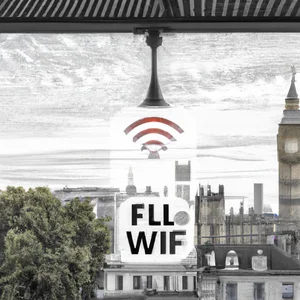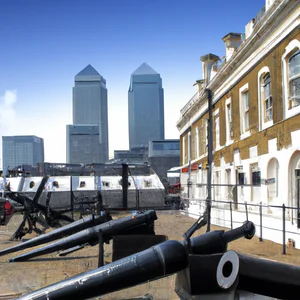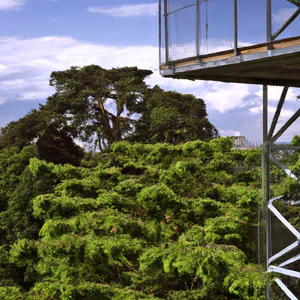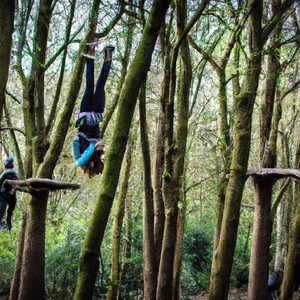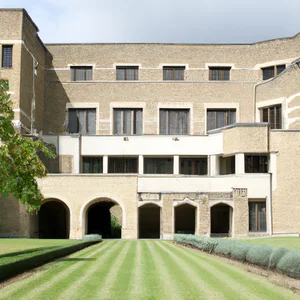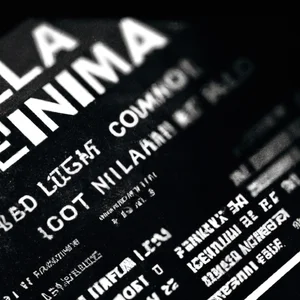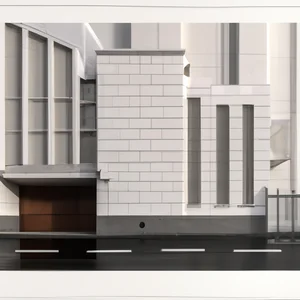Book your experience
Waterloo: from Europe's busiest station to the sights of the South Bank
Waterloo, guys, what a place! It is practically the super crowded station in Europe, one of those where you feel a bit like a little ant in the middle of an anthill, always in motion. When you are there, one eye is on your bag and the other on the train that is about to leave. And what about the South Bank? It’s like a breath of fresh air, a real corner of paradise in the midst of chaos.
If you drop by, there are tons of things to see. Basically, every time I go there, I feel like I discover something new. The view of the Thames is breathtaking, and I assure you that walking along the river is like being in the middle of a film. I remember once, I was there with a friend, and we started chatting in front of the London Eye. It’s a bit kitsch, I know, but the sunset light gave it a magical atmosphere, and I felt really lucky in that moment.
And then, speaking of attractions, there are the markets, art galleries and restaurants that make your mouth water. I’m not sure, but I think there’s a place where they have the best fish and chips in town. I’m serious, next time you go there, you definitely have to try them! In short, Waterloo is a bit like the beating heart of London, a mix of people running, tourists taking photos and street artists playing their melodies, creating a truly unique atmosphere.
Simply put, if you’re in London, Waterloo and the South Bank are like the salt and pepper to a good dish: you just can’t do without it!
Discover Waterloo: the beating heart of London
A Personal Journey into the Heart of London
The first time I got off at Waterloo station, the frenzy hit me like a wave. The noise of trains departing and arriving, the chatter of commuters and the scent of coffee from the surrounding kiosks create a vibrant and unique atmosphere. It was a rainy morning, yet, the moment I stepped into this station, I immediately felt part of something big, almost epic. With over 100 million passengers a year, Waterloo is not just a transport hub, but a symbol of London’s urban life.
Practical Information
Located in the heart of London, Waterloo station is well connected to the tube and several national rail lines. The closest tube stations, such as Waterloo Station (Lines Bakerloo, Jubilee, Northern and Waterloo & City), make the station an ideal hub for exploring the city. Don’t forget to visit Waterloo’s Southbank Centre, a place where art and culture intertwine, with events ranging from concerts to contemporary art exhibitions.
Insider advice
If you find yourself in Waterloo, try to explore Waterloo Bridge at sunset. Little known by tourists, it offers breathtaking views of the Thames and the London skyline. It is the perfect place to take unforgettable photos and enjoy a quiet moment, away from the crowds.
The Cultural and Historical Impact
Waterloo is not just a railway station; it is a place full of history. The Battle of Waterloo in 1815 marked the end of the Napoleonic Wars and its memory is rooted in the very name of the station. Today, the station acts as a bridge between past and present, welcoming visitors from all over the world and telling the story of a London that is constantly evolving.
Sustainable Tourism Practices
When visiting Waterloo, consider using public transport instead of private cars. London is committed to sustainability, and using public transport can reduce your carbon footprint. Additionally, there are several local initiatives that promote eco-friendly practices, such as organic markets and river clean-up events.
Atmosphere and Sensations
Walking through the crowded corridors of the station, you will feel like you are in a movie. The neon lights, café windows and the buzz of passengers create a lively atmosphere. Every step is an adventure, every face a story. Imagine yourself sitting in a corner, sipping a cappuccino while watching the world pass you by.
An Activity to Try
After exploring the station, don’t miss the opportunity to visit the London Eye, which is just a short walk away. This iconic Ferris wheel not only offers spectacular views of the city, but also represents a symbol of modern London.
Myths and Misconceptions
A common misconception is that Waterloo is just a transit point. In fact, the station and its surroundings offer a myriad of unique experiences. Often overlooked by tourists more interested in traditional attractions, Waterloo is a treasure trove of culture, history and adventure.
Final reflection
As you venture into the beating heart of London, ask yourself: what makes a place truly special? Is it the architecture, the history or the people that animate it? Waterloo, with its vibrant energy and rich heritage, invites reflection on how every corner of the city tells a story worth discovering.
Unmissable attractions along the South Bank
A personal experience
I still remember the first day I set foot along London’s South Bank. The scent of street food mixed with the fresh air of the Thames, while the bright colors of the markets brought the riverfront to life. As I walked, I felt enveloped in a vibrant atmosphere, full of art, music and life. It is here that I discovered the true beating heart of London, where every corner tells a story and invites to be explored.
Practical information
The South Bank is an iconic stretch along the River Thames, stretching from Westminster Bridge to Tower Bridge. Key attractions include the London Eye, the Tate Modern, and the Shakespeare’s Globe. Every year, this area attracts millions of visitors, and to stay up to date on the latest exhibitions and events, I recommend checking the South Bank Centre official website and the museums’ social pages.
An insider tip
If you want an authentic experience, try visiting Borough Market on a weekday. This food market is less crowded than on weekends and offers the opportunity to savor unique dishes prepared by local chefs. Don’t forget to try the salt beef bagel, a typical dish that contains historical flavors of London.
Cultural and historical impact
The South Bank is not just a tourist area, but a cultural center rich in history. In the 1950s, the Festival of Britain transformed this area into a symbol of post-war renewal and hope. Today, the South Bank continues to represent a crossroads of cultures, where artists of all kinds perform and where London’s cultural heritage is celebrated at every event.
Sustainability and responsible tourism
When exploring the South Bank, consider using public transport or bicycles, which are great for reducing environmental impact and experiencing the area more authentically. Several local initiatives also promote sustainable practices, such as river clean-up events and organic produce markets. Supporting small local businesses is another way to travel responsibly.
A vivid atmosphere
Imagine walking along the river at sunset, with the sun reflecting on the water and the sound of laughter ringing around you. Street musicians create a melodic background while families and friends enjoy the evening. Every step along the South Bank is an invitation to discover something new, to be surprised by the beauty of London.
An activity worth trying
Don’t miss the opportunity to take a guided tour of the Tate Modern, where you will have access to world-famous contemporary works of art. If you want something more unusual, book a contemporary art workshop to fully immerse yourself in the creative experience.
Myths and misconceptions
A common misconception is that the South Bank is just a tourist area. In reality, it is a lively and authentic community, where Londoners gather for events, concerts and simply to enjoy the beauty of the river. Ignoring this aspect means losing a fundamental part of the essence of London.
Final reflection
As you prepare to visit the South Bank, ask yourself: what does discovering a city mean to me? It’s not just seeing the iconic sights, but also immersing yourself in the stories, cultures and experiences that make each trip unique. Whether you’re an experienced traveler or a first-timer, London’s South Bank has something special to offer everyone.
Street cuisine: authentic flavors to try
When I first set foot in Waterloo, the enveloping scent of street food immediately caught my attention. As I walked along the South Bank, I came across a lively food market, where vendors displayed a variety of dishes that told stories of different cultures. Between a bite of bao stuffed with chicken and a taste of hot churros, I understood that Waterloo’s street food is not just a gastronomic experience, but a real journey through the flavors of the world.
A constantly evolving market
Every Thursday and Friday, the Southbank Center hosts the Street Food Market, where a selection of food trucks and stalls offer fresh and creative dishes. From Indian specialties to African cuisine, the market is a kaleidoscope of flavours. A valuable source of information is the official Southbank Center website, which constantly updates events and vendors present.
An insider tip
If you want a little-known tip, try looking for the little stall at Borough Market, where a seafood vendor offers the best fresh oysters in town, served with a squeeze of lemon and a spicy sauce. This kiosk is easily overlooked, but it’s worth stopping in for a taste that will leave you speechless.
A dive into culinary history
Waterloo street food isn’t just a modern phenomenon. This tradition dates back centuries, when street vendors offered food to workers and travelers. Today, the market still reflects the same community energy and love of good food that characterizes British culture. It’s a unique way to discover London’s history through food.
Sustainability in the dishes
Many vendors at the Southbank Center are committed to using locally sourced ingredients and sustainable practices. Choosing to eat from these vendors not only supports the local economy, but also contributes to responsible tourism. Find out about the increasingly popular vegetarian and vegan options that help reduce your environmental impact.
Immerse yourself in the flavors
For an authentic experience, don’t miss the opportunity to take part in a guided food tour. These tours will not only take you to discover the best delicacies, but will also give you the chance to meet the vendors and listen to their stories. It’s a way to learn about the daily life of the Waterloo community.
Myths to dispel
A common misconception is that street food is unsafe or low quality. In contrast, many of London’s best restaurants were founded by chefs who began their careers selling food on the streets. Quality and innovation are at the heart of this gastronomic experience.
A final reflection
Next time you’re in Waterloo, stop for a moment and let the flavors tell you a story. Which dish impressed you the most? Perhaps you might discover a new love for street food, which will stay with you for life.
Culture and history: the hidden side of Waterloo
An unexpected encounter
During one of my walks along the South Bank, I came across a little slice of history: the Waterloo Vaults, a former train depot transformed into a lively cultural centre. As I entered, the scent of art and creativity pervaded the air. Here, local artists displayed their works and musicians performed live, creating an atmosphere that seemed to envelop me in a warm embrace. It was a reminder of how Waterloo is a melting pot of culture and history, often overlooked by tourists seeking London’s most famous attractions.
Discover Waterloo’s heritage
The history of Waterloo is intrinsically linked to its transformation from an industrial area to a pulsating cultural centre. With its historic station, opened in 1848, this neighborhood has played a crucial role in connecting London to the rest of the country. Today, visitors can explore the Southbank Centre, a cultural complex that hosts concerts, festivals and exhibitions, reflecting the diversity and vitality of the community. Sources such as the London Transport Museum offer insights into London’s transport history, which is key to understanding the evolution of Waterloo.
An insider tip
One of Waterloo’s best kept secrets is La Bodega Negra, a Mexican restaurant located on a side street. Known only by locals, it offers an authentic dining experience and dishes prepared with fresh ingredients. Don’t let the discreet facade fool you: once inside, you will be greeted by a lively atmosphere and flavors that will transport you straight to Mexico.
The cultural impact of Waterloo
The area is not just a place of passage, but a symbol of resilience and rebirth. Its evolution from an industrial area to a cultural center has attracted artists and creatives, contributing to a unique cultural identity. This shift has led to an increase in sustainable tourism, with local initiatives promoting events and craft markets, encouraging visitors to support small businesses and local artists.
Immerse yourself in history
For an authentic experience, I recommend taking part in a guided tour of waterloo’s hidden gems, where local experts will take you to discover little-known but rich in history corners. These tours offer a unique perspective on daily life in Waterloo, away from the tourist crowds.
Final reflections
Walking the streets of Waterloo is like leafing through a living history book, where every corner tells a different story. I invite you to reflect: how much do we really know the places we visit? Next time you find yourself in Waterloo, take the time to explore its hidden sides and discover the cultural richness this area has to offer. What story would you like to discover on your next trip?
Walk along the river: a unique experience
An unforgettable memory
I remember the first time I walked along the River Thames in Waterloo. The sun was setting, painting the sky in shades of orange and pink, while the water sparkled like a mosaic of jewels. Every step along the South Bank was accompanied by the sound of laughter, chatter and music from the restaurants and bars overlooking the river. This stretch of London isn’t just a walking route - it’s a sensory journey that engages all your senses.
Practical information
The riverside walk extends for over 3 miles, starting from the London Eye to Tower Bridge, and offers spectacular views of London’s major landmarks. Visitors can take advantage of numerous stops along the way, including the Tate Modern, the Globe Theater and Borough Market, to name just a few of the must-see attractions. The area is well connected by public transport, with Waterloo tube station just a few steps away steps.
An insider tip
Here’s a little-known tip: if you want a truly unique experience, visit the sunrise walk. Not only will you avoid the tourist crowds, but you’ll also have the chance to watch the river come to life, with fishermen and joggers starting their day. The soft lights of dawn create an enchanting atmosphere, perfect for taking memorable photos.
The cultural and historical impact
The walk along the Thames is not just a way to enjoy the beauty of London; it is a journey through its history. This area has witnessed significant historical events, from the construction of the first bridge over the Thames to the cultural developments that have shaped the modern city. The presence of the Tate Modern and the Globe Theater reminds us of the importance of culture and art in the heart of London.
Sustainability and responsibility
In an age where responsible tourism is key, the riverside walk offers the opportunity to explore the city on foot or by bike, reducing your environmental impact. Many of the restaurants and cafes along the route are committed to sustainability, using local ingredients and eco-friendly practices. Choosing to stop at one of these places not only enriches your gastronomic experience, but also supports the local community.
An unmissable activity
Don’t miss the chance to try a boat trip along the Thames. Several companies offer sightseeing tours that will allow you to see London from a completely new perspective. Along the way, you can admire Tower Bridge, the Tower of London and many other iconic landmarks, while listening to your guide tell fascinating stories about each location.
Myths and misconceptions
A common misconception is that the riverside walk is only for tourists. In fact, it is also a place loved by Londoners, who use it as a space for recreational activities, from exercise to relaxation. Street artists and local markets make this route a vibrant and dynamic place, far from the static image of a simple tourist attraction.
Final reflection
Walking along the river in Waterloo is more than just a walk; it is an experience that enriches the soul and stimulates curiosity. We invite you to reflect: how can a simple walk along the river transform into a journey of discovery and connection with one of the most iconic cities in the world? Next time you find yourself in London, treat yourself to this gift; the city has a lot to tell, and you could be the next to discover its secrets.
Sustainability on the South Bank: travel responsibly
When I visited the South Bank for the first time, one crisp spring morning, I was struck by the vibrant community pulsating along the Thames. As I walked, I could smell the street food mixing with the crisp air, and the street artists displaying their talent created a vibrant atmosphere. But what struck me most was the clear focus on sustainability that permeated every corner of this iconic neighborhood.
A conscious journey
Sustainability on the South Bank is not just a modern idea, but a fundamental part of the place’s identity. According to the South Bank Partnership, many of the local venues have adopted eco-friendly practices, such as using recycled materials and promoting eco-friendly events. Food markets, such as the famous Borough Market, offer local and organic products, thus reducing the impact of transport and supporting regional producers.
An insider tip
If you would like to contribute to this commitment to sustainability, I suggest you take part in one of the eco walks organized by local guides. These experiences will allow you to explore the South Bank while learning about the eco-friendly practices in place and discover how the community is working to preserve the environment. Not only will you have an authentic experience, but you will also have the opportunity to encounter how Londoners are tackling environmental challenges.
History and culture of sustainability
The South Bank has seen significant transformation over the years. Originally an industrial area, it is now a hub of cultural and social innovation. This evolution has brought with it a growing awareness regarding sustainability. The National Theatre and Tate Modern, for example, have implemented energy efficiency measures and waste management practices that reflect a commitment to a greener future.
Soak up the atmosphere
Walking along the river, as the sun reflects on the waters of the Thames, you can feel the energy of a place that embraces change. The recycled wood benches, planters filled with local plants and public spaces designed to host community events speak of particular attention to the environment. The view of the city rising in the background makes every moment even more magical.
An activity not to be missed
Don’t miss the opportunity to visit Greenwich Market, a little further away but easily reachable, where you can enjoy local food and sustainable crafts. Here you will also find numerous initiatives that support fair trade, an excellent way to contribute to a more just and sustainable future.
Myths to dispel
A common misconception is that traveling responsibly means sacrificing fun. In fact, the South Bank proves that sustainability and pleasure can coexist. Activities and experiences that promote sustainability not only enrich your trip, but also allow you to experience London more authentically.
In conclusion, I invite you to reflect: how can you, on your next trip, embrace sustainability and discover a new side of a city that is constantly evolving? The beauty of the South Bank is that, while you enjoy every moment, you can also become part of its story of responsibility and care for the environment.
Local Events: Immerse yourself in the Waterloo community
An experience that tells stories
I still remember my first visit to Waterloo, when I came across a local market that takes place every Saturday outdoors, right near the station. The air was filled with the scents of fresh food and laughter, while street artists enlivened the atmosphere with music and performances. This is the beating heart of Waterloo: a place where the community comes together to celebrate their culture and traditions.
Practical information
In Waterloo, events such as the Waterloo Festival and the Southbank Centre’s Summer Festival are just a taste of the many events that enliven the neighbourhood. These events not only offer an opportunity to discover local talent, but also to immerse yourself in interactive activities and workshops. To stay up to date on events, check the Southbank Centre official website or the social pages of local initiatives.
An insider tip
If you want a truly unique experience, try attending one of the poetry nights at the Southbank Centre, where emerging poets perform in an intimate and welcoming environment. It’s not just an event, but a moment of sharing and connecting with London’s contemporary culture.
Cultural and historical impact
Waterloo has a long history of cultural events dating back centuries. Its strategic position as a meeting point has always attracted artists, musicians and thinkers. Today, this tradition continues, transforming Waterloo into a crossroads of ideas and creativity, where different cultures come together in unique harmony.
Sustainability and responsible tourism
Many events in the Waterloo area focus on sustainability. Initiatives such as zero kilometer markets and eco-friendly festivals encourage visitors to support local producers and reduce environmental impact. By participating in these events, you not only have fun, but you also contribute to a more sustainable future.
A vivid atmosphere
Imagine walking along the banks of the Thames, with the sunlight reflecting on the water, as you approach a street party. Here, the sound of laughter and live music mix with birdsong, creating an almost magical atmosphere. Each event is an opportunity to discover the flavours, sounds and stories of Waterloo.
An activity worth trying
If you’re looking for an authentic experience, attend an outdoor dining event, like Diner en Blanc, where attendees dress in white and bring food to share. It’s a great way to connect with the community and enjoy delicious food in a unique setting.
Myths and misconceptions
A common misconception is that events in Waterloo are exclusively for tourists. In fact, many of these events are organized by residents and for residents, which means the atmosphere is genuine and welcoming. Don’t hesitate to ask locals for advice; they will be happy to share their secrets.
A final reflection
Next time you’re in Waterloo, ask yourself: What stories might you discover by attending a local event? Immersing yourself in the community is not only a way to get to know a new place, but also to enrich your travel experience and create lasting memories. Don’t miss the chance to experience the true essence of this vibrant London neighbourhood.
Waterloo Station: architecture that tells stories
When I first stepped into Waterloo Station, the grandeur of its architecture left me speechless. The majestic iron and glass arches, which rise above the platforms, almost seem to embrace travellers, creating an atmosphere of welcome and movement. With around 100 million travelers a year, every single step you take here seems to be imbued with stories of adventures, encounters and nostalgia. The station is not just a transit point, but a stage where the lives of people from every corner of the world intertwine.
A little history
Opened in 1848, Waterloo is an extraordinary example of Victorian architecture, combining functionality and beauty in a way that only the great works of the past can. Its structure, designed by Sir William Tite, stands out for its elegant lines and its large dome, which is somewhat reminiscent of European cathedrals. The station has witnessed historic events, such as the Second World War, when it served as a refuge for Londoners fleeing bombing.
Insider tip
A little-known tip is to visit the Waterloo Vaults, a series of underground tunnels that host art and music events. This space, often overlooked by tourists, offers an intimate and vibrant atmosphere, where emerging artists can perform and where you can discover London’s alternative cultural scene. Be sure to check out the calendar of events during your visit!
Cultural impact
Waterloo Station has always played a fundamental role in the cultural life of London. Not only is it a crucial hub for transportation, but it is also a symbol of connection between different cultures and histories. Its architecture has inspired artists, writers and filmmakers, helping to define its identity. Every morning, commuters and tourists mingle, creating a human mosaic that reflects the diversity and vitality of the British capital.
Sustainability and responsibility
In an age where sustainable tourism has become essential, Waterloo is committed to reducing its environmental impact. The station has implemented eco-friendly practices, such as waste recycling and the use of renewable energy, contributing to a greener future for the city. Choosing to use public transport and bicycles to explore the area is an excellent way to experience the city responsibly.
Immerse yourself in the atmosphere
To explore the station, take a moment to sit in one of the cafes overlooking the main hall. Order a flat white and watch the frenzy surrounding you. Every face tells a story, and every moment is an opportunity to imagine where these travelers might be headed.
Myths and misconceptions
A common myth is that Waterloo Station is just a place to pass through, but in reality, it is a fascinating destination in its own right. Many tourists tend to overlook it, thus missing the opportunity to explore its hidden gems and fully experience the vibrant atmosphere of this space.
A final reflection
Every time you pass through Waterloo station, ask yourself: what stories lie behind the people you meet? The next time you walk through its doors, take a moment to reflect on how every journey begins with one step, not just physically, but also in how we connect with the world around us. Are you ready to discover the stories that await you?
Secrets of the South Bank: little-known corners
Arriving at London’s South Bank is like discovering a secret book in a forgotten library. The first time I set foot in this neighborhood, after passing the chaos of Waterloo station, I found myself in a world that seemed to pulsate with life and creativity. As I walked along the river, I noticed a little corner of tranquility: a hidden park, Gabriel’s Wharf. With its colorful stalls and small cafes, it is the perfect place for a break between visits.
Hidden Corners and Surprises
Many tourists focus on the most famous attractions, such as the London Eye or the Tate Modern, but the real charm of the South Bank lies in its lesser-known corners. For example, the Bargehouse, a former industrial structure, often hosts contemporary art exhibitions and installations that escape the tourist circuit. Here you can attend unique events and discover emerging talent, all in an atmosphere that is both historic and avant-garde.
An insider tip? Don’t miss the opportunity to visit the Southbank Centre, where, in addition to concerts and shows, there are often craft markets and community events. It’s a great way to immerse yourself in the local culture and maybe go home with a unique souvenir.
The Cultural Impact of the South Bank
The history of the South Bank is intrinsically linked to London’s transformation from an industrial city to a cultural mecca. In the 1950s and 1960s, this area was redeveloped and saw the creation of numerous cultural institutions. Today, the South Bank is a symbol of innovation and creativity, a place where art and culture intertwine with everyday life.
Sustainable Tourism
If you are a conscious traveller, the South Bank also offers responsible tourism opportunities. Many of the venues and initiatives here are committed to community support and environmental sustainability. For example, local markets promote local and organic products, contributing to a circular economy that is good for both visitors and residents.
An experience not to be missed
If you’re craving a memorable experience, try visiting the National Theatre during one of its ‘Open Mic’ nights. Here, emerging artists perform across a variety of genres, offering a taste of London’s vibrant cultural scene. It’s an opportunity to appreciate the creativity that pervades the South Bank, away from the usual tourist attractions.
It is often thought that the South Bank is just a passing area, but in reality it is a place full of stories and surprises. Next time you’re near Waterloo station, stop and take a tour of its lesser-known corners. Maybe, while sipping a coffee in a small café, you could reflect on how London is a mix of frenzy and tranquility, a perfect balance between chaos and beauty. Have you ever wondered what other secrets this fascinating city can hide?
Restaurants with a view: enjoy London from above
An unforgettable experience
The first time I visited a restaurant with a view in Waterloo, I was sitting at a table overlooking the Thames. As I sipped a cocktail, the sun was setting, painting the sky in shades of gold and pink. The silhouette of the London Eye stood out against the view, creating a magical atmosphere that you could almost feel. Every dish served seemed to carry with it a piece of that beauty. It is in these moments that we understand how a meal can become a complete sensory experience.
Practical and up-to-date information
Waterloo offers a selection of restaurants with a view ranging from elegant to more casual. Among the most recommended options is the Skylon, located inside the Royal Festival Hall. With breathtaking river views and cuisine that celebrates local ingredients, the menu varies seasonally, ensuring a consistently fresh experience. Another fascinating option is the Oxo Tower Restaurant, which offers refined dishes with spectacular panoramic views of the city. Don’t forget to book in advance, especially on weekends, to ensure the best seat.
An insider tip
If you want a unique and intimate experience, I recommend visiting the Tate Modern Café. With great views of St. Paul’s Cathedral, it’s a great place for a light lunch or coffee, and you don’t need to pay admission to the gallery to access it. Here, you can enjoy fresh, artisanal dishes, surrounded by contemporary works of art, all at an affordable price.
The cultural and historical impact
Eating with a view in Waterloo is not only a pleasure for the palate, but also an immersion in London history and culture. Restaurants along the South Bank are often located in historic buildings or areas of great cultural significance. For example, Borough Market, just a few steps away, is a symbol of London’s culinary tradition, where street food blends with gastronomic art in a vibrant and welcoming environment.
Sustainable tourism
Many of these restaurants are committed to sustainable practices, such as sourcing ingredients from local producers and using recyclable materials. This not only reduces environmental impact, but also supports local communities. Choosing to eat in these places means contributing to responsible tourism.
A unique atmosphere
London, with its mix of modernity and history, offers an atmosphere that is difficult to describe in words. Imagine enjoying a plate of fresh seafood with a view of the Thames, as the city lights begin to twinkle and the sounds of urban life blend into a lively symphony. It is an experience that involves all the senses and remains etched in the memory.
An activity worth trying
If you want to make your dining experience even more special, try booking a Sunday brunch at Sky Garden. Located in the skyscrapers of Fenchurch Street, it offers a panoramic view of London that will leave you breathless. Brunch is accompanied by a wide selection of dishes and drinks, perfect for starting the day in style.
Myths to dispel
A common misconception is that restaurants with a view in London are always expensive. While there are high-end options, many places offer delicious dishes at reasonable prices, especially during lunch hours. Don’t be afraid to explore and discover hidden gems!
A final reflection
At the end of the day, enjoying a meal overlooking London is not only a way to nourish the body, but also an opportunity to nourish the soul. What kind of dining experience would you like to have in Waterloo? You may find that the real delight lies in mixing gastronomy with the beauty of one of the most iconic cities in the world.

 Architecture and Design
Architecture and Design Cities and Regions
Cities and Regions Culture and History
Culture and History Events and Festivals
Events and Festivals Fashion and Shopping
Fashion and Shopping Food and Wine
Food and Wine Nature and Adventure
Nature and Adventure Unique Experiences
Unique Experiences


















